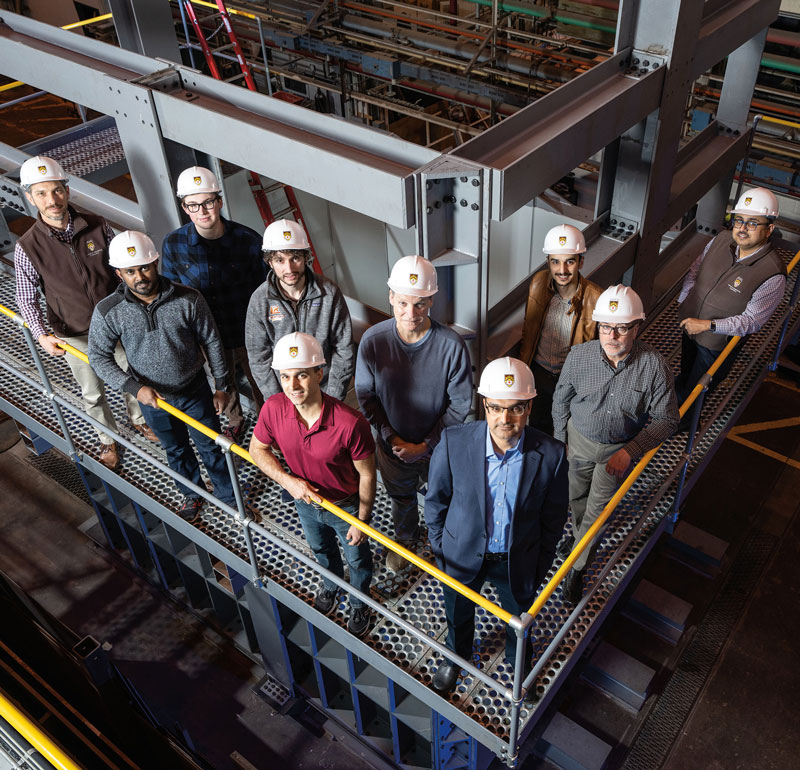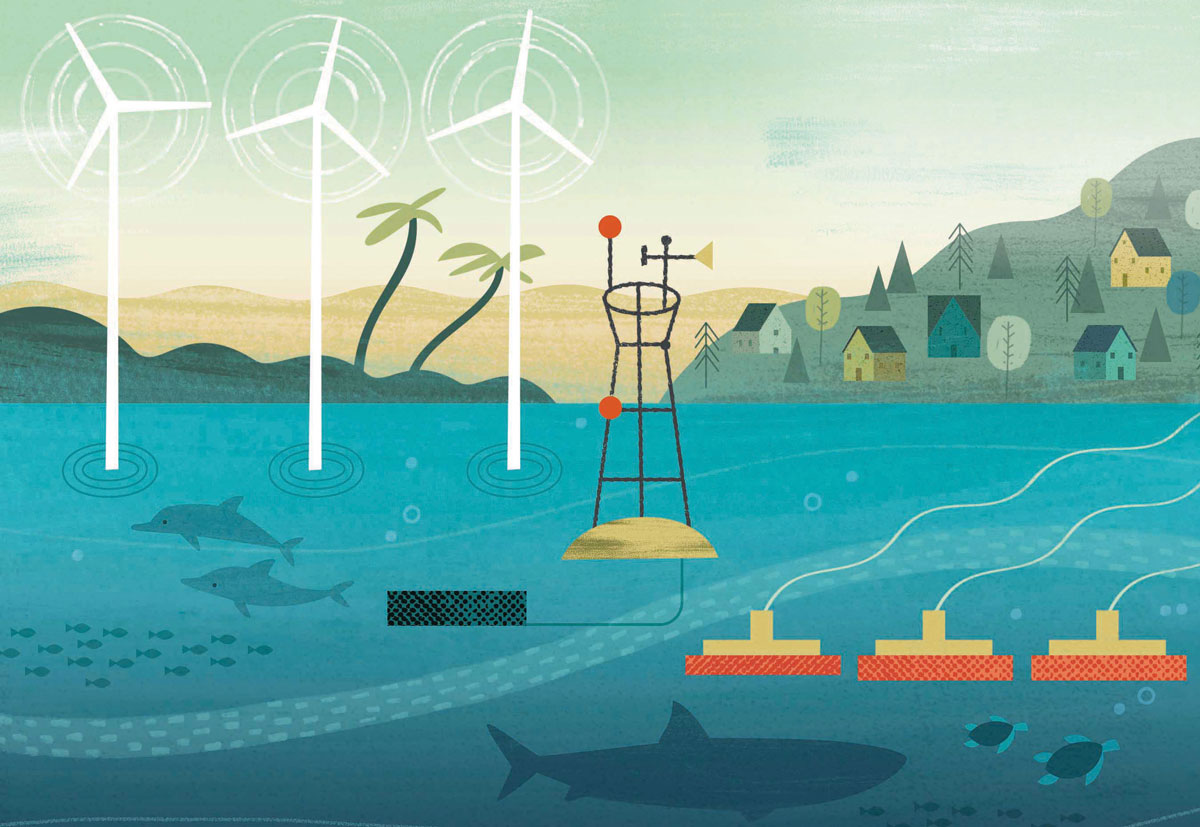 The United States has the capacity to generate 7200 terawatt-hours per year from offshore wind. “That’s twice the total electricity use in the U.S. in 2020,” says Muhannad Suleiman, a professor of civil and environmental engineering (CEE) who specializes in geotechnical engineering. “But right now, the U.S. produces only approximately 40 megawatts, which is the equivalent of about 7 wind turbines.”
The United States has the capacity to generate 7200 terawatt-hours per year from offshore wind. “That’s twice the total electricity use in the U.S. in 2020,” says Muhannad Suleiman, a professor of civil and environmental engineering (CEE) who specializes in geotechnical engineering. “But right now, the U.S. produces only approximately 40 megawatts, which is the equivalent of about 7 wind turbines.”
Suleiman says there has been a push from industry, coastal states, and the federal government to increase production to 30 gigawatts by 2030 and 110 gigawatts by 2050. Rossin College researchers are now one step closer to assisting with that push. The offshore wind multidirectional soil-foundation interaction testing facility the team has been building within Lehigh’s ATLSS Engineering Research Center is nearly complete and will be ready for testing later this spring.
Improvements to the structure came via a 2019 Department of Energy (DOE) award meant to advance wind energy nationwide. Six projects, including Lehigh’s, received a total of $7 million for testing and upgrades to facilities to conduct innovative offshore wind energy R&D.
“The U.S. had limited testing facilities for offshore wind infrastructure,” says Suleiman, the project’s principal investigator. “And to date, a very limited number of researchers have looked at the behavior of the whole offshore wind turbine structure including its foundation support system. Most researchers have focused on a single component. So the main idea was to build on concepts that ATLSS and mechanical engineering faculty have been working on.”
In addition to the soil-foundation interaction, those concepts include large-scale multidirectional real-time hybrid simulation, which was developed by CEE professor James Ricles. The simulations will be performed involving mix mode load and displacement control, a research topic that CEE professor Richard Sause is leading. The proposed concept also requires developing forces applied by waves and wind, the research areas of mechanical engineering and mechanics professors Arindam Banerjee and Justin Jaworski, respectively, who are also part of the DOE offshore wind energy project team. The Lehigh team is also collaborating with Dr. Mohamed Mekkawy, a consultant, professional engineer, and leading expert in geotechnical offshore site characterization.
“In a hybrid simulation, the offshore wind turbine structure is divided into substructures (parts). Some parts are modeled using analysis (analytical substructures), while the remaining parts of the system are modeled in the laboratory (experimental substructures) and tested using the offshore wind multidirectional soil-foundation interaction testing facility,” says Suleiman. “The analytical and experimental substructures are interfaced with a real-time hybrid simulation coordinator, which is used to solve for the response of the whole offshore wind turbine structure.”
Turbines in Europe are typically placed in shallow water, up to 30 meters deep, he says. But turbines in the U.S. could be installed in deeper water, thanks to the continental shelf, and could be subjected to severe conditions like hurricanes and earthquakes.
So while there will be some transfer of the European experience, he says, the industry in the U.S. needs new technology for these different loading conditions from waves, wind, and other sources.
“The offshore wind turbine structures are expected to be in service for a few decades, and will be subjected to long-term normal, operational loading from waves and wind,” he says. “That creates several challenges. For example, how do those long-term cyclic loads change the behavior of the foundation and the soil over time? The structures could also be subjected to extreme loading conditions such as storms. What are the long-term effects of those high wind and wave conditions on the soil and the foundation? How does that affect the response of the structure and energy production?”
Jaworski and Banerjee will provide expertise on integrating wind aerodynamics and wave hydrodynamics into the hybrid simulation.
“Currently, the design process of offshore wind turbines is a sequential iterative process where geotechnical engineers, structural engineers, and mechanical engineers work separately,” says Suleiman. “Our approach is holistic and interdisciplinary in nature, making it unique.”
One of the main goals, he says, is to establish ATLSS as a national laboratory for offshore wind turbine foundations and substructures, where researchers and scientists can better understand offshore wind energy structures under different loading conditions, and ultimately push forward an industry with enormous potential.
“This project opens a whole new area for us on renewable energy infrastructure,” he says.
—Photo by Ryan Hulvat/Meris

